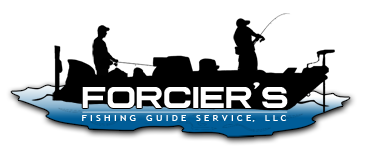Boat Control
Published September 3, 2002
By Steve Worrall
Muskie fishing involves as many details as there are minutes in the day, all needing to be carefully considered during the time one spends on the water. If I was to put any single factor as the most important, boat control would get my vote.
Boat control incorporates the gas and electric motor, your sonar and your ability to read it well and the variables Mother Nature sends our way. Before one can properly control a boat to maximize one’s presentation, the ‘reading the water’ portion becomes absolutely critical.
Sonar, especially the new liquid crystal units, can be very misleading. One needs to understand that the information displayed on the screen is running right to left, backwards for what we are used to, and is largely history. The first 1/8 of an inch of the screen on the right is what is actually important, as that is what is under the boat real time as possible. The rest of the screen is history, or where your boat has been.
I like to compare reading the sonar screen to riding on the tailgate of a pick-up truck. Use the sonar as it is intended. Read the manual, and learn how to get the best out of your locator. Learn how to read the soft, medium, and hard bottom signals. Learn to accept that anything on the screen between you and the bottom is an object, and should be looked at closely and studied. Learn what single fish, schools of fish, and baitfish clouds look like. Learn what a thermocline looks like. Most importantly, learn how to incorporate the information you have on the screen to your location and proximity to the water you wish to cover! Any body of water is really just a field filled with the element that keeps your boat floating, and the fish alive and well-water! The problem for most is that the water also makes the field invisible, so the concept of looking at the lake or river in that way can be difficult to put into place. Start at the shoreline break, and learn the system using your sonar as the ‘windshield’ and the electric as your ‘gas pedal’. Learn to see the bottom as one would when looking into a field from up above it, and then place the cover (weeds), shelves (rocks), and breaklines to the center of the field in the mind’s eye.
Once that process begins to take shape for the angler, then the contour lines begin to form in memory. I often wondered exactly how I knew EXACTLY where an inside turn starts on a weedline out in open water. I believe I have it figured out!
Take a ride downtown in your car or truck, and try to actually THINK about how you process where to turn, and when. Visual cues, like a store, sign, or other landmark are what one subconsciously uses to mark one’s way. Elapsed time between them is also measured subconsciously, and arrival is usually uneventful. Throw in a distraction, however, and the whole process is disturbed. I have sometimes suddenly had the strangest dislocation; where am I? Did I miss my turn?
Frantically one searches for a familiar object, until one is sighted, and the process begins again. Exactly the same process WILL occur if one treats the sonar as the ‘windshield’, getting the information for the road (structure track) from the screen, and staying on the ‘road’ using the trolling motor, and a controlled drift. If 12′ is the depth that allows for the cast to hit the edge, then that depth is your lane. Go out to 13′, and one is out of one’s lane. Up to 11′, and one is over the ‘center line’. The same concept can be used while trolling, too.
Once the understanding and clear picture of the lake or river bottom is attained, then little tricks using the equipment on the rig can be used. Never lift the gas outboard out of the water. The outboard provides a drift rudder, and you are more likely to lose a fish trying to get past it when it is trimmed all the way out of the water than if it is trimmed all the way down. When drifting parallel, always turn the prop INTO the wind. This will allow the rig to pull forward, angle the nose forward, and then allow the wind to push the transom to track again. Repeating this with the electric adjusted for drift will keep the boat ‘on the road’.
If pulling the boat along the contour, face the prop away from the structure. As one pulls the boat along nose into the wind with a bow mount electric in short bursts from the motor, the natural track from the motor ‘rudder’ will track the boat slightly in, then along, then slightly away from the line, then repeat. This allows the boat to drift down a contour line the wind is blowing directly into, with no trouble at all. In a way, the process is like sailing!! If one is using a transom mount, the same process is used, in reverse.
The idea is to always have the presentation where one thinks the fish are. Reading the water, controlling the rig, and placing the cast there makes the difference between accidental muskie capture, and muskie capture with design!!
Buy good equipment, and never underpower the rig with a puny electric. I have a Minn Kota 55 PD on my 1760, more than enough. Last year, I used a 74# unit on my 20 footer, again, perfectly matching the electric to the rig
